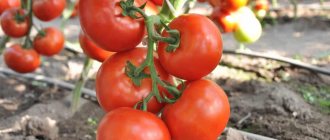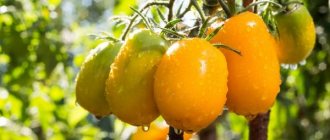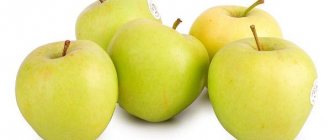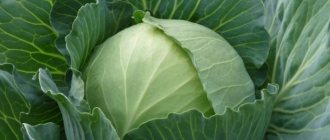History of the variety's creation
Many breeders are breeding compact, short varieties of fruit trees, based on the main positive qualities of these crops - they take up little space, are easier to care for and easier to collect ripe fruits. In addition, such trees are better adapted to the close occurrence of groundwater.
Among these short cherries, the relatively recently developed Tamaris variety should be noted. The author of this cherry is T. Morozova, a breeder from the All-Russian Research Institute of Horticulture and Nursery. I. V. Michurina.
She carried out work on developing a new variety, and the Cherry Cherry Cherry was taken as the basis. During breeding work, the seed material of this variety at the germination stage was treated with a special chemical preparation Ethyleneimine.
As a result, a new cherry was developed, the name of which was given in honor of its creator. Work on breeding Tamaris cherries was carried out in the last quarter of the last century, then tests of this variety were carried out. And only in 1994, Tamaris cherries were included in the State Register of Russia.
Video about Tamaris cherry
It was recommended to grow this stone fruit crop in the Central Black Earth and North Caucasus regions of Russia.
But in recent years, Tamaris cherries have been successfully grown in some other areas of the country.
Care
When planning to plant Tamaris cherries in your own garden, you need to take care of a good site for the crop. Only under this condition and proper care will there be good harvests.
Choosing a place
Cherry loves sunny, well-lit areas with light and loose soil. Close proximity to groundwater, wind and drafts, and heavy soils are not allowed. The variety belongs to the group of bush cherries; the distance between planting holes is left at least two meters.
It is advisable to plant trees in the spring, since during autumn planting there is a high risk of the cherry freezing. If seedlings were purchased in the fall, it makes sense to dig them in until spring. The soil is dug up in the fall and the necessary fertilizers are applied. In areas with acidic soils, you will need to add dolomite flour or ash.
Cherry planting
The dimensions of the holes for this cherry variety are 50x50 cm, so that the roots of the seedling can fit freely in the hole. The top layer of soil from the hole is mixed with humus (2-3 kg), ash (1 kg), superphosphate (30 grams), and half of the mixture is filled into the hole. They install a peg for support, pour a hole, place a seedling in it, sprinkle the roots with the rest of the mixture and soil, and compact it.
You may be interested in: Pruning cherries: when and how to do it correctly Cherry “Besseya”: characteristics and descriptionCherry varieties resistant to coccomycosis and moniliosis for the Moscow region
A small roll of earth is poured along the border of the tree trunk circle (about 40-50 cm from the cherry trunk). The circle is once again watered and carefully mulched with hay or straw. Peat and rotted compost are also suitable.
Tamaris cherry: description of the variety and its main characteristics
The height of Tamaris cherry trees is on average 1.8-2.0 m, and only some specimens can reach 2.5 m.
The crown of this cherry is round, medium dense, noticeably raised above ground level. The bark of the trunk and main shoots is brown. Fruiting occurs only on bouquet branches.
How to choose the right cherry variety for Siberia!
25 best varieties of cherries for Siberia
The shoots are quite long, well-leafed, their bark is colored brown with a brown tint. The number of lentils on the branches is small. The buds are oval, extending from the shoots at an acute angle.
The foliage is medium in size, with doubly cloves formed along the edges. The plates are smooth, bright emerald in color with clearly visible veins. There is no pubescence on the leaves. Petioles are short, of medium thickness.
The flowers are medium in size, the petals are round, white in color.
On a note!
The Tamaris cherry blooms late. Ripe berries of the Tamaris variety are large in size, weighing about 4-5 g.
The shape of the berries is round, slightly flattened at the top, there is a small depression at the base, and a slight seam runs along the abdomen.
The color of the smooth, shiny skin is purple, with clearly visible small brown spots. The pulp is of a delicate consistency, dark red in color, and contains a large amount of juice.
Cherry Tamaris - photo of the bush
The stone is quite large, round, and easily separated from the ripe pulp. The berries are attached to the branches using fairly long stalks.
The taste of ripe Tamaris cherries is sour-sweet. These berries contain about 10% sugars, 2% acids, and 100 g of product contains about 37.5 mg of vitamin C.
Since the taste of ripe Tamaris berries is better than that of most other cherry varieties
, then it is more often used for canning. This cherry produces very tasty juice, liquid jam, since the pulp contains a large amount of juice.
Tasty and aromatic compotes are also canned from these cherries, ripe berries are frozen for the winter, and also dried. In addition, well-ripened cherries are consumed fresh and desserts are prepared - in a word, the collected fruits of Tamaris cherries have a universal purpose.
Trees are highly resistant to frost
. The branches of this cherry tree do not break even with strong gusts of wind, since the trees are not very tall.
Important!
Tamaris cherry is a frost-resistant variety; without additional shelter, the tree can withstand frosts down to -23-25 degrees Celsius.
But the resistance to drought of this stone fruit tree is average, so in the hot dry season, Tamaris cherries require more frequent watering, otherwise the cherries will fall off before reaching ripeness.
The average lifespan of this stone fruit tree is at least 20 years
, and from the beginning of fruiting until the end of its life, the harvest of this cherry is stable, abundant and annual, and the fruits do not decrease in size and their taste does not deteriorate.
The only thing that can affect the yield of this fruit tree is too cold winters, for example, in Western Siberia. In this region, the life expectancy of this stone fruit crop is much lower, the fruiting period is also reduced, and the taste of Tamaris cherry fruits is much worse than in warmer regions.
Description of culture
The Tamaris variety is a low-growing species, so an adult tree is a natural dwarf.
An important advantage of the Tamaris variety is high yield combined with compactness. It is the short stature that makes it possible to place a sufficient number of trees on the site, and also greatly facilitates crop care and harvesting. The height of an adult cherry tree is no more than 2 m. Individual specimens of “Tamaris” can reach a height of 2.5 m.
"Tamaris" is recommended by its originators for cultivation in the Central Black Earth and North Caucasus regions. “Tamaris” is often used by summer gardeners when landscaping and landscaping the site, and creating compact orchards.
Important! Gardeners do not recommend planting cherries next to currants to avoid the spread of diseases.
Brief characteristics of the Tamaris cherry variety:
- The crown of the cherry tree is spreading, not too dense, and round in shape. It is distinguished by its elevation, which is visible quite clearly.
- The bark on the main branches and trunk of the cherry tree is brown in color.
- The shoots are long and produce a small number of lentils. The buds of the Tamaris variety are oval.
- The leaves are smooth without pubescence, with denticles along the edges of the leaf blade. The cuttings are short.
- The inflorescences of the Tamaris cherry variety consist of medium-sized white pink flowers.
The great pride of gardeners who grow Tamaris cherries is the fruit. They are large, round, dark red in color, and have excellent taste. The seed inside is also large, and the flesh is juicy, sweet and sour. Less acid, more sweetness. Therefore, at the first tasting, the taste of delicate berries makes a pleasant impression.
Tamaris fruits contain 38 mg/100 g of vitamin C, almost 10% sugars, and 1.67% acids. The weight of one cherry is about 5 g. The transportability of the fruits of the variety is at an average level, so gardeners try to sell and process the harvest as quickly as possible.
Pollinator trees for Tamaris cherries
Tamaris cherry is a self-fertile variety
– the pistil and stamens with pollen in the flowers of this variety are approximately at the same height, and fertilization of the flowers occurs at the bud stage.
Therefore, in this cherry, after almost all the flowers, productive ovaries are formed, which subsequently develop correctly.
Due to its self-fertility, this stone fruit tree is able to set fruit without the presence of nearby pollinating trees. But many gardeners note that the fruiting of Tamaris cherries will be more abundant if cherries of other varieties with similar flowering periods are planted nearby.
Self-fertile cherry varieties for the Moscow region!
The most delicious cherry varieties for the Moscow region
Ideal pollinating varieties for Tamaris cherries:
Turgenevka; Zhukovskaya; Lyubskaya.
It should also be noted that the Tamaris cherry can also become an excellent pollinator for self-sterile cherry varieties.
Characteristics of the variety
Tamaris cherry belongs to the category of self-fertile fruit crops. Due to the almost identical height of the pistil (from which the berry develops) and the stamen, the anther of which contains fertilizing pollen, the process of ovary of the future fruit occurs inside the still closed (bud) flower.
This factor contributes to the formation of productive ovaries and the maintenance of normal conditions for their development.
The self-fertility factor in Tamaris means that this cherry variety is capable of setting fruit without the participation of third-party pollinating plants in the pollination process , only due to self-fertilization.
Experienced gardeners claim that the average yield of this variety increases noticeably if additional pollinators are planted next to it - cherry trees of the Turgenevka, Zhukovskaya, Lyubskaya varieties.
Along the way, it is worth noting that the described variety, for its part, is a high-quality pollinator for some other types of cherries.
Self-fertile varieties include Volochaevka, Novella and Pamyati Enikeeva.
According to observational data, the yield of one average tree, which begins to bear fruit in the 2-4th year of its life , is approximately 8-10 kg.
In the conditions of the city of Michurinsk - the birthplace of the Tamaris variety - the yield of this cherry per hectare is 65-80 centners.
The varieties Nadezhda, Shubinka, Uralskaya Rubinovaya and Rossoshanskaya Chernaya also demonstrate good yields.
Good yield is facilitated, in particular, by another significant property of this cherry - its rather late ripening period.
This helps the plant avoid the harmful effects on developing fruits from frost, which is quite real and not uncommon in early spring. The berries traditionally become ripe in the second ten days of July - early August.
By the time the ripe fruit is picked, it acquires the sweet and sour taste characteristic of this variety. Moreover, there is still slightly more sweetness in it than acidity (acidity is considered to be at an average level).
The biochemical composition of ripe Tamaris is as follows:
| Compound | Quantity |
| Sugar | 9,98% |
| Acids | 1,68% |
| Ascorbic acid | 38 mg/100 g |
It is also necessary to note the high degree of winter hardiness of its wood.
In addition, the small growth of trees of this variety is a good option for areas located in a region with frequent strong winds: short branches break under gusts of wind relatively rarely.
In general, Tamaris cherry is a very well adapted variety to the climatic and soil characteristics of central Russia.
Among the winter-hardy varieties, it is worth paying attention to Vyanok, Zhukovskaya and Morozovka.
Productivity
The Tamaris cherry variety begins to bear fruit 2-4 seasons after planting. The fruits begin to ripen quite late, so they are not negatively affected by spring return frosts.
And the harvest from Tamaris cherries is harvested depending on the climatic conditions of the growing region from mid-July to early August.
From one adult Tamaris cherry tree, at least 10 kg of ripe berries are collected.
And in the homeland of this variety in the city of Michurinsk, at least 70 centners of this berry are collected from each hectare.
Characteristics
The main characteristics of the Tamaris cherry variety, for which gardeners choose it for planting, should be described in more detail.
Important! During the flowering period, cherries cannot be treated with chemicals!
Drought resistance, winter hardiness
The species belongs to varieties with high winter hardiness. Without shelter, cherries can easily withstand frosts down to -24°C. Drought resistance of "Tamaris" is average. During periods of severe drought and heat, you should not leave the tree without irrigation, otherwise you may lose a significant part of the harvest.
Pollination, flowering period and ripening time
The Tamaris variety is self-fertile. Fruits on bouquet branches. The ovaries are formed during the period when the flowers are still closed. Therefore, the variety perfectly forms a harvest on its own. Pollinators are not necessary for Tamaris cherries. On the contrary, the variety is a good pollinator for other late-bearing species. However, the yield of the Tamaris variety increases significantly when adjacent to the Lyubskaya, Zhukovskaya, and Turgenevka cherries. On the section of the branch that has grown over the year, up to 16 buds are formed, half of which are flower buds.
This type of cherry belongs to the late ripening period. Fruit formation occurs at a time when the harmful effects of spring frosts are no longer possible.
Fruit ripening occurs from the second half of July to early August.
Productivity, fruiting
"Tamaris" begins to bear fruit in the 2nd or 3rd year after planting.
This is an advantageous characteristic for gardeners, allowing them to get their first harvest very quickly. From one tree you can collect up to 10 kg of ripe berries per season, when grown on an industrial scale - up to 80 c/ha.
Important! Before planting Tamaris cherries, be sure to check the depth of the groundwater so that the roots are not in danger of rotting.
The lifespan of cherries is more than 20 years. During this period, fruiting is stable, the quality, quantity and size of the fruit does not decrease. The only factor that can affect productivity is harsh climatic conditions, for example, in Western Siberia. In this region, the Tamaris variety is characterized by a shorter life expectancy, reduced fruiting period and reduced harvest quality.
Area of application of berries
The berries of Tamaris are much sweeter than the usual taste of cherries, therefore they have universal use. Cherry juices are very tasty and rich. When frozen, the fruits perfectly retain their shape, juiciness and taste, and the compotes have a pleasant aroma and bright cherry color.
The berries of the variety are suitable for drying, and the jam has a liquid consistency due to the juiciness of the cherries. When fresh, the fruits are superior to many varieties in terms of taste.
Resistance to diseases and pests
Resistance to crop diseases is quite high; the ability of the variety to resist coccomycosis is especially valued. Other fungal diseases also rarely affect Tamaris cherries.
Advantages and disadvantages
Like any fruit and berry crop, the dwarf cherry “Tamaris” has its pros and cons.
| Advantages | Flaws |
| High yield | Mandatory and timely pruning in order to regulate the load on the tree. The branches break due to the large number of fruits |
| Disease resistance | |
| Winter hardiness | |
| Compact and short | |
| Self-fertility | |
| Wind resistance |
Advantages
Among the main advantages of the Tamaris variety it should be noted:
- high productivity;
- resistance to most diseases;
- high resistance to cold;
- excellent taste of the Tamaris variety;
- compact size and small height of trees of this variety;
- self-fertility;
- Cherries of this variety practically do not break from gusts of wind.
There are no particular disadvantages noted in this cherry.
. But it is necessary to trim the shoots in order to regulate the load of the tree with the harvest, since the shoots can break under the weight of the berries.
Cherries for the Moscow region - expert opinion
Disease and pest control
The Tamaris variety is resistant to such a dangerous disease as coccomycosis; it is also less afraid of moniliosis. But preventive treatment and attention to the condition of the cherries are needed in any case, as this will eliminate the occurrence of infections and the trees will be healthy.
Prevention measures include:
- timely removal of all overgrown, diseased and old branches;
- processing of cuts when pruning;
- spraying cherries throughout the season (with a solution of iron sulfate, 1% Bordeaux mixture);
- crown thinning;
- maintaining distances between seedlings when planting cherries;
- removing weeds.
If signs of disease appear, the tree will have to be treated promptly. To prevent coccomycosis, cherries are sprayed with copper-containing preparations and Bordeaux mixture in spring and autumn. Treating moniliosis with a 3% solution of copper sulfate and removing all damaged shoots helps. Spraying with Polyram is effective against anthracnose; Bordeaux mixture (3%) will help to cope with perforated spotting. But it is still important to remember that treatment of cherries is not always successful, since fungal infections are tenacious and difficult to fight. Prevention is the main thing that novice gardeners should learn.
In preventive pest control, folk remedies are widely used: chamomile infusion, decoctions of tomato or potato tops, burdock, wormwood. Of the special formulations, we note the following drugs:
- Fitoverm (from aphids);
- Fufanon (from the slimy sawfly);
- Diazinon (for cherry fly);
- Actellik (from weevil).
All drugs are used strictly in accordance with the instructions, observing treatment times and doses.
Tamaris cherry is a variety suitable for growing in various regions of Russia. An unpretentious and compact plant is distinguished by its productivity, and with proper and proper care it bears fruit even in short summer conditions.
Growing Tamaris Cherries
The Tamaris cherry variety can be planted both in spring and autumn.
. In the spring, seedlings are planted before the buds begin to bloom on them - approximately in mid-April. In the autumn, when planting trees, you need to take into account that at least a month must pass before the onset of cold weather, during which the plantings will become stronger, take root well and be able to survive the cold winter.
The area where this cherry will grow should be well lit by sunlight and ventilated by wind (but not strong). The soil is light, loose, preferably loamy with a neutral pH level.
If the soil on the site is far from such an ideal, then they should be improved: add sand and humus to heavy soils, and compost or humus to sandstone. Too acidic soils are improved by adding lime or dolomite flour to them during autumn digging.
Planting holes for cherry seedlings are prepared in advance, making the distance between them at least 2 meters.
You should also pay attention to what crops grow in the neighborhood. It is recommended to plant this variety of cherries away from apple trees, pears, plums, apricots, and cherry plums.
It is optimal if the distance between these trees and the cherry tree is at least 5 m.
The best neighbors for the Tamaris variety are:
- cherries;
- grape;
- hawthorn.
The purchased two-year-old Tamaris cherry seedling must be strong and healthy, without signs of visible damage, with a root length of about 0.2 m, and a trunk height of no more than 1 m.
Planting holes must be at least 0.5 m in diameter, with the same depth
. A layer of drainage about 5 cm thick is laid on the bottom.
Then pour out a layer of nutrient substrate from humus (10 kg), superphosphate (2 tbsp), potassium chloride (25 g), wood ash (6 cups). This mixture is thoroughly mixed after placing in the planting hole.
How to plant a cherry seedling correctly - video
Near the center of the hole, a stake is driven in as a support for the young tree, a seedling is installed in the center, its root system is straightened along the diameter of the hole, the hole is filled with soil mixture, compacted, and the tree is tied to the support.
Then it is necessary to form a near-trunk circle with a border around its edges from the soil so that irrigation water does not go beyond its boundaries.
20-30 liters of water are added to each seedling, then a layer of mulch is poured on top.
Landing Features
Planting a new variety is not only an exciting event for every gardener. The health, duration of fruiting of the variety, as well as the quantity and quality of the harvest depend on how responsibly and competently you approach this process.
Recommended timing
Tamaris cherries can be planted in spring and autumn. If spring planting is planned, then the event must be carried out before the buds on the seedling open. This usually happens in April. Autumn planting of trees is possible no later than October. But still, it is better to plant “Tamaris” in the spring, so that the onset of early autumn frosts does not destroy the weak plant, and the seedlings have time to take root and prepare for winter.
Important! Infection of cherries with coccomycosis occurs through the leaves, so spring planting before buds open will prevent the occurrence of the disease.
Choosing a suitable location
Cherry "Tamaris" takes root well and bears fruit well in well-lit and ventilated areas. Therefore, it is important to choose a place for her in the garden so that it meets her requirements.
To plant Tamaris cherries, it is necessary to select an area with loose, light loamy soil. If the soil structure differs from the required one, then take appropriate measures to improve the soil composition. Be sure to reduce the acidity to a neutral pH level if the soil is acidic.
Although the variety is low-growing, a distance of at least 2 meters must be left between plants.
What crops can and cannot be planted next to cherries?
Different crops grow in the garden, so the development, fruiting and productivity of the cherry tree depend on the correct selection of neighbors. For "Tamaris" it is preferable to select a site next to cherries, grapes or hawthorn.
But close proximity to apple trees, pears, plums, apricots or cherry plums is undesirable. The optimal distance between unwanted neighbors and Tamaris is 6 meters. In this case, all plants will get along well and will bear fruit well.
Selection and preparation of planting material
A cherry seedling is considered high quality if:
- tree height is at least 1 m;
- it has a branched root system 20 cm long and several branches on the stem;
- there are no signs of disease or damage to the roots, bark or leaves;
- the age of planting material is no more than 2 years.
It is recommended to purchase seedlings from trusted suppliers. It is advisable to soak the cherry roots for 2-3 hours before planting and be sure to trim off the damaged parts.
Landing algorithm
Even a novice gardener can plant Tamaris cherries. It is important to adhere to the following agrotechnical recommendations:
- Dig a planting hole measuring 50 x 50 cm.
- Make sure that the root system of the cherry seedling fits freely into the hole when it is straightened.
- Place a drainage layer on the bottom of the hole, then a mixture of humus (1 bucket), superphosphate (40 g), potassium chloride (25 g), wood ash (1 kg). The soil mixture must be mixed well before planting.
- Before planting, drive in a stake for subsequent staking of the cherry seedling.
- Place the seedling on the north side of the peg, straighten the roots, and cover with soil.
- Compact the soil, make a circle around the trunk, water generously with water (2-3 buckets).
- Mulch the surrounding area.
And once again briefly about the landing:
Further care of Tamaris cherries
This cherry tree requires regular watering, loosening of tree trunks to remove weeds, fertilization throughout the season, as well as regular pruning.
Young trees need to be watered once every 6-8 days, adding at least 10-20 liters of water to each
. During budding, ovary formation and crop formation, the amount of watering increases. After the harvest is completely harvested, water the cherries only when necessary.
Feeding
If all the necessary fertilizers were added to the soil before planting, then in the first three seasons the Tamaris cherry does not need to be fed.
Feeding cherries during flowering - video
In the future, fertilizing is applied to this cherry twice a year - in spring and autumn.
. In the spring, it is necessary to apply fertilizers containing a large amount of nitrogen, and in the autumn - potassium-phosphorus fertilizers.
Organic matter is added to Tamaris cherries once every 3 seasons in the spring, when the tree trunk circles are loosened.
Pruning Tamaris cherry trees
The procedure for pruning the Tamaris cherry variety is carried out regularly in spring and autumn. In spring, it is necessary to shorten the branches by about 1/3, otherwise they may break under the weight of ripe fruits.
In the fall, sanitary pruning is usually carried out, during which all weak, diseased, dry and damaged shoots are removed.
Spring pruning of cherries | How to prune cherry trees in spring?
All cut branches should be burned immediately, and the foliage can be used as additional fertilizer.
Preparing for winter
Young trees should be covered for the winter, as they are not yet strong enough and can freeze in severe frosts. Mature trees usually do not require shelter. It is only necessary to wrap the trunks with a metal mesh to prevent rodents.
Agricultural technology varieties
Further care is standard:
- watering;
- application of fertilizers (3-4 years after planting);
- pruning
Organic matter and mineral fertilizers are used for fertilizing. Nitrogen is introduced in the spring; diluted mullein or bird droppings, urea (20 grams per bucket of water) are suitable. Rotted compost or humus is also added to the soil around the tree trunk.
During autumn digging, potassium and phosphorus fertilizers are applied under the cherries. Trees are fed with ash infusion during the growing season: before flowering and approximately 10-14 days after flowering.
Young seedlings are watered regularly after planting, controlling soil moisture. Overmoistening is not allowed, but drought is also contraindicated for cherries. In the future, when Tamaris begins to bear fruit, it is watered at the time of cherry blossom, when the berries begin to set, and in the fall, after the leaves fall.
Pruning is carried out in the spring, removing all weak, dry shoots, with abnormal growth and non-fruiting branches, carefully covering the cuts. Cherries are pruned in September (middle zone and northern regions), in October and early November - in the southern regions. Spring pruning - before the sap begins to flow, all branches that did not survive the winter are also removed.
ATTENTION! Trim the cherry until the buds swell; as soon as a green cone appears, stop the procedure.
The sections must be processed using garden varnish or natural drying oil paint. Sometimes gardeners use ordinary medical green stuff, but it only disinfects wounds and does not protect the cuts from cracking.
Advantages and disadvantages of the variety
Despite the many positive qualities and the long work of breeders to improve them, Carmine Jewel is not ideal. In reviews of the variety, some gardeners admire the totality of its advantages, while others doubt the quality declared by the manufacturers.
- Advantages:
- stable fruiting begins from the 3rd year of life;
- high resistance to severe frosts and prolonged moisture deficiency;
- abundant fruiting;
- self-fertility;
- high taste and commercial qualities of the crop;
- possibility of long-term storage of fresh berries;
- after ripening, the fruits do not fall off the branches;
- satisfactory resistance to common diseases and pests;
- ease of harvesting (due to the compactness and dwarfism of the plant);
- versatility of the fruit.
- Flaws:
- full disclosure of fruiting potential only in the 7th year of life (because of this, owners of large gardens cannot recoup the costs of planting them);
- low transportability (due to excessive juiciness of the fruit);
- the first ripe fruits will appear towards the end of July (there is no possibility of an early harvest);
- the amount of ovary formed is affected by weather conditions;
- in the first years of life, the yield of a young tree will not exceed 4–5 kg.
Peculiarities
Features of Tamaris cherry:
- Winter hardiness is high, yield is stable in any season. With sharp spring temperature changes, a slight decrease in fertility is possible due to freezing of the buds. Do not remove tree cover ahead of time.
- Resistance to diseases is good, especially to fungi that cause yellowing of leaves, the appearance of red dots on them, discoloration of the plate to brown, and complete drying. In order for trees to resist diseases well, they need to be looked after and regularly undergo preventive treatments.
- Tamaris cherry is a self-fertile fruit crop. Due to the same height of the pistil and stamen, fruit set occurs in a closed flower bud. The self-fertility factor indicates that the variety sets fruit without actively participating in the pollination process of other plants. Experienced gardeners recommend planting it next to Bessey, Zhukovskaya, Nochka, Malyshka, Turgenevskaya cherries, and sweet cherries, as this increases the yield. Tamaris is also a good pollinator for other varieties of cherries.
- Ripening period, yield, transportability - the average yield of a tree that begins to bear fruit 2-4 years after planting is 8-10 kg. This indicator can be increased by following the rules of agricultural technology. The keeping quality of the berries is average. In order for cherries to better tolerate storage and transportation, stop watering them a week before picking.
Tamaris cherries grow well, but only in appropriate soils. Pollinators are not required, but with appropriate proximity, crop yields increase noticeably.
Planting and care
Before planting a seedling, it is necessary to carefully prepare the place for the future adult tree and provide for the maximum possible nuances.
In particular, it is better to allocate an area measuring 3x3 meters for an individual Dessertnaya Morozova. Within such a square, the root system - the basis of any plant - will be able to develop normally in depth and breadth.
Of course, the planting site should be located on the sunny side of the garden.
It is desirable that there be as little drafts and winds as possible, and that groundwater does not come too close to the surface of the earth (no closer than 1.5-1 m).
You should also pay attention to the quality of the soil at the planting site. It should consist of chemically neutral (acidity) loam, sandy or sandy loam soil
It should consist of chemically neutral (acidity) loam, sandy or sandy loam soil.
In the center of an improvised square for planting a tree, dig a hole 40-60 cm deep and 50-60 cm in diameter.
The soil removed from the hole should not be thrown away. It is mixed with mineral and organic fertilizers (humus, humus) for subsequent filling of seedling roots.
During planting, the seedling is placed strictly vertically in the hole, its roots are straightened.
After filling the hole with a mixture of soil and fertilizers, the area near the trunk within a radius of 40-50 cm is carefully compacted using any available means.
The first watering immediately after planting is at least 3 buckets of non-cold, settled water.
After watering, the soil that has sagged under the influence of moisture is sprinkled with a 2-centimeter layer of mulch made from sawdust and humus.
Standard plant care includes regular watering of the tree (for one adult plant - at least 4 times a month, a bucket of water in the morning and evening), loosening the soil around the tree, and periodic pruning.
When pruning, bare branches of the crown are usually shortened.
If such pruning is neglected, the number of bare branches will greatly increase, which will certainly negatively affect the cherry yield.
Pros and cons of the variety
The variety is not afraid of precipitation, neither is frost - in general it is quite resistant to external factors, prolific, productive, “strong”. To protect against fungal diseases, regular preventive treatments are needed. Frost resistance is normal, but the buds can freeze in severe winters. Early fruiting crop - if things go well, the harvest can be harvested 2-3 years after planting. Read about the features of the Kharitonovskaya cherry variety here.
Tamaris cherry fruits have high, almost dessert qualities.
Compact bush-like trees take up minimal space on the site, they are easy to care for, and harvesting is not particularly difficult. Also, low crops can more easily tolerate direct contact with nearby groundwater. Small cherries grow well in areas with strong winds because they practically do not break. The Tamaris variety is ideally adapted to the climatic conditions of the middle zone.
Garland
Trees tolerate frost well, but flower buds often suffer from low temperatures. The weight of one berry reaches 6 g. The fruits can be heart-shaped or round in shape with flattened sides. The peel is dark cherry, the flesh is bright red, there are small white veins. The pulp is juicy, fleshy, the taste is sweet and sour.
In a favorable season, one mature cherry can produce up to 50 kg of berries. Usually 25-45 kg of cherries are removed. The berries are used mainly for making compote, juice, and jam. But the high vitamin content means that it is better to consume cherries fresh.
Seedlings are planted in spring, when the soil is well warmed up. Timely application of fertilizing and regular watering contribute to obtaining a plentiful and tasty harvest. The variety is suitable for cultivation in the southern regions.
Description of the variety
In the Tambov region there is a research institute of horticulture and nursery farming, named after the famous scientist I.V. Michurina. Thanks to the work of the institute’s scientists, hundreds of varieties of various fruit and berry crops have been born, including the low-growing Tamaris cherry.
In the early 90s, it was registered in the lists of the State Register of the Russian Federation, and although recommendations for cultivating cherries were given only for two regions of the country - the North Caucasus and Central Black Earth, Tamaris is successfully grown in other areas.
The cherry variety is valued for its disease resistance, tasty berries, and good yield indicators. Low, up to 1.7-2 meters, Tamaris trees are distinguished by their crown, which is shaped like a ball. The density is average, the main fruiting shoots are bouquet branches.
The trunk is dense, the bark is dark brown.
ON A NOTE! The peculiarity of Tamaris cherries is the absence of peeling and peeling on the bark.
The branches are long, flexible, there are a large number of lentils. Oval-shaped buds are deflected from the branches. The leaf blades are smooth, glossy, with short petioles, rich green in color. There is no pubescence on the surface, the veins are dark red. The foliage cover is dense, so when planting seedlings, holes are made at a distance of at least 2-3 meters from each other.
Tamaris flowers are very similar to small roses, the color is white. Flowering time is short, no more than 4-6 days.
The berries are round in shape, the seam is hardly noticeable. The weight of Tamaris fruits reaches 4-5 grams. The pulp is dense, juicy, of the same dark red color with skin.
The achene separates easily and has a cream color. The taste of the berries is sweet and sour, aromatic. When overripe, tiny dark spots appear on the surface of the fruit. This does not affect the taste of the berries. A special separating layer separates the stalk and the berry from each other.
The berries are universally used: fresh, for making desserts, and eaten fresh. The berries are suitable for compotes, juice, and delicious liqueurs. Jams are not entirely suitable for making jam, so fruits are often frozen for storage.
Aftercare of the tree
Cherries don't require much attention. The owner needs to periodically water, apply fertilizers, perform pruning and take preventive measures against diseases and pests.
Important! Since the variety is partially self-fertile, other pollinating cherries should be planted in the garden to increase its yield. The best pollination occurs with the varieties Vladimirskaya, Studencheskaya, Griot Ostgeimsky, Griot Rossoshansky.
Watering
It is advisable to water cherries once every 1.5–2 weeks. Moisturizing is necessary after flowering, during the formation of ovaries, after fruiting and in the fall. Each tree requires 15–20 liters of water. The soil should be moistened to a depth of 40–45 cm. Moistening should be combined with shallow loosening of the soil. This procedure will avoid the formation of a hard crust on the surface of the earth and improve its moisture and air permeability qualities.
It is also recommended to mulch the soil in the tree trunk area after watering. This is necessary to conserve moisture and prevent weed growth. At the end of October, if the autumn is not rainy, in order to prepare the tree for winter, water-charging watering is carried out - 100 liters per plant.
Top dressing
It is necessary to start feeding the plant when it reaches two years of age. Until this moment, the fertilizers that were applied during planting will be enough for him.
In the future, you can use the following table to draw up a feeding schedule:
| Payment deadline | Fertilizer |
| Before flowering | Liquid nitrogen |
| During flowering | Herbal tea or aqueous solution of bird droppings (1:10) |
| After flowering | Compost |
| After fruiting | Nitrogen-containing “organics” |
| Early autumn | Complete mineral |
| Before winter | Phosphorus-potassium |
Whitewash
At the end of autumn, another important procedure will need to be performed - whitewashing. You need to whitewash the trunk and lower branches to a height of 1.5–1.7 m. Whitewashing protects the bark from sunburn, cracks and frost damage. To carry it out you need a special mixture.
It can be purchased ready-made or prepared with your own hands from various components, for example, copper sulfate and lime, white paint with antiseptic additives.
Trimming
Mandatory pruning is carried out in March, before the start of sap flow, and in the fall. In the spring, this procedure is done for sanitary purposes - all damaged, frostbitten, diseased branches are removed. In autumn, all bare branches are made shorter. If this procedure is neglected, there will be a significant reduction in yield, since side shoots will not form.
Cherry pruning scheme
Growing
Tamaris cherry requires the following growing conditions:
- Climate – as for other varieties, choose a site that is protected from cold winds, as warm and sunny as possible. High humidity is harmful to shrubs - if possible, plant on hills, mounds, or simply in places where groundwater lies quite deep (at least 2 m). Low-growing trees tolerate moisture relatively well, but grow better in dry conditions.
- Soils suitable are slightly acidic, fertile or neutral. Mechanical composition – loam, sandy loam, sandy. If the soil is acidic, add a bucket of sand and 5 kg of dolomite flour (to each hole) to the hole.
- Planting is done using high-quality seedlings, preferably one or two years old, since poor planting material simply will not sprout. You should buy them in specialized stores or nurseries; pay attention to the degree of root development. Constantly water the soil so that the plant does not dry out.
Find out how to graft cherry onto cherry at this link.
The seedling's buds must be healthy, intact, without signs of disease or damage, the roots must be fresh, without dry or deformed parts.
Experienced gardeners say that two-year-old seedlings, due to their developed root system, grow better than one-year-old ones.
- The holes are marked at a distance of about 2 m from each other (since the bushes are small). Don’t forget about the need to plant pollinators on the site if they don’t already exist, and if there are, draw up a diagram taking into account the location of different trees. A hole is dug to a depth of 60-80cm, the top layer of soil is separated, mixed with manure (take strictly rotted), compost or peat 1:1. Remove the lower clay parts of the soil or make holes out of them. You can add a little potassium and phosphorus to the planting hole (preferably as part of complex fertilizers).
- Drainage at the bottom of the hole is done using crushed stone or gravel. Humus, dolomite flour, a mixture of soil and humus are thoroughly mixed, then the hole is filled with the resulting mass a little more than halfway, and a peg is installed. A mound of soil is formed and the roots are carefully straightened out. The neck of the roots should be at soil level. The seedling is immersed in the hole and covered.
- All that remains is to tie the seedling to a peg, carefully compact the soil and form a watering hole.
Additionally, it is recommended to mulch the area around the trunk with sawdust and peat.
A brief excursion into history
The low cherry variety was bred by breeder T.V. Morozova on the basis of the All-Russia Research Institute named after I.V. Michurin (in the Tambov region). The specialization of the author of the variety is the production of low-growing cherry varieties that are resistant to the winter season and produce high yields.
To obtain the desired result, the breeders treated seedlings of the “Shirpotreb Chernaya” variety with the chemical mutagen EI at the seedling stage. The result of long development is the Tamaris cherry variety, which got its name from the name of the author
Features of cultivation
The Ksenia variety is notable for the fact that it does not require any special growing conditions and is able to develop and bear fruit well in a temperate climate.
We recommend reading about cherry propagation methods, planting and subsequent care.
Climatic conditions
Ksenia cherry is the result of the activities of Ukrainian breeders, so it is fully adapted to the climatic conditions of the region. In addition, thanks to its good frost resistance, it can grow well in the Central and Central Black Earth regions of Russia, in particular, the Moscow region.
To plant a crop, it is necessary to select a sufficiently illuminated, spacious area that is well protected from cold winds and drafts. You also need to plant the seedling away from outbuildings or tall trees so that they do not shade the plant.
Soil for a tree
Ksenia is not too demanding on the soil, however, in order to obtain stable and decent yields, it is recommended to choose nutritious, light, breathable and loose soil for planting. The best option for growing cherries is loamy or sandy loam soil with a neutral acidity level. The ideal option is black soil.
When choosing a place to plant a crop, you need to pay attention to the depth of groundwater. If it is not lower than 2–2.5 m, then when planting a seedling you should definitely make a high-quality drainage layer, which will prevent moisture from stagnating in the ground
Important! Experts do not advise planting seedlings on swampy or clayey soil, since the soil structure is too hard and high humidity will not allow the plant’s root system to fully develop
Specifics of care
In order for a cherry tree to grow well and bear fruit, it needs to be cared for: watered, fed, preventative sprayed, and the crown formed.
See also
When is the best time to replant cherries, rules and step-by-step instructions
Read
Watering and fertilizing
Abundant watering is required when planting cherries, during flowering and fruit formation. During other periods of development, irrigation is carried out as needed. Increase watering in dry, hot weather.
It should be borne in mind that excessive soil moisture can lead to the formation of fungal diseases.
If the cherry was planted in fertile soil, fertilizing begins in the 3rd year after planting. In the spring, nitrogen-containing fertilizers are applied for the growth of green mass. In summer and autumn, potassium-phosphorus fertilizer is applied. Tamaris responds well to the application of mullein at the time of flowering.
Pruning and crown formation
To prevent the cherry crown from thickening, formative pruning is performed. The shoots grow intensively, so they need to be pruned constantly. If this is not done, the branches may break under the weight of the berries. In addition, dry, broken, frostbitten shoots are pruned.
Prevention from diseases and insects
The Tamaris variety has good immunity, but due to unfavorable weather conditions or errors in care, cherries can be affected by diseases and pests. For prevention, trees are sprayed with insectofungicides.
Winter protection
The tree trunk is wrapped in a layer of paper or burlap. The tree trunk circle is covered with a thick layer of snow. The branches can be bent and covered with straw or tops. With the arrival of heat, the covering material is immediately removed to prevent damping off of the above-ground and underground parts of the cherry.
Wintering cherries
Tamaris is a winter-hardy variety; it is grown successfully both in the Moscow region and in northern regions with cold winters. But regardless of the climatic conditions in which the tree will be planted, in the first winter after planting it must be covered with protective material. Both burlap and agrofibre are suitable for these purposes.
The protective covering should be removed as soon as warm weather arrives. Otherwise, the tree will begin to rot and fungus will develop.
The Tamaris cherry variety is very loved by gardeners for its easy planting and unpretentious care, and for its abundant harvest of very tasty, sweet berries. This is not a capricious cherry, resistant to diseases, insects and adverse environmental factors.
Harvesting and storage
Harvesting is carried out in one go, so that the fruits remaining on the tree do not attract birds and insects. In a cool place, berries removed with stems can last for about 10-15 days. If the fruits are removed without stalks, they must be eaten fresh or processed within 2 days.
Additional Information! In order for the berries to be stored for a long time or to endure transportation without damage, it is necessary to stop watering the tree a week before harvesting.
For long-term storage, the berries are frozen. They will not lose their taste and beneficial properties. Thawed fruits can be used to make drinks or as an ingredient for sweet and dessert dishes.
Many people freeze cherries and use them in winter
Application of berries
The Tamaris cherry variety is distinguished by its very tasty, sweet fruits, which are used for various winter preparations. The fruits are especially good as raw materials for preparing cherry juices, the taste of which is very rich and bright.
The fruits are used to prepare compotes, tinctures, liqueurs and wines. The cherry harvest is ideal as an ingredient in the preparation of sweet pies, pies, and dumplings. Jams and preserves are prepared from cherries, which have a liquid consistency, because the berries are very juicy.
Additional Information! Tamaris berries are suitable for drying.
conclusions
- Tamaris cherry is frost-resistant, requires standard care, and is grown mainly in the central regions of the Russian Federation.
- Basic crop care involves watering, fertilizing, mulching, and pruning.
- For better rooting, use young seedlings (one- and two-year-olds); apply fertilizer to the holes during preparation.
- Shelter for the winter and other preparatory work are required.
- The presence of pollinators on the site is not necessary.
- Low bush-tree varieties occupy a minimum of space on the site and practically do not break under high wind loads.











